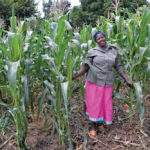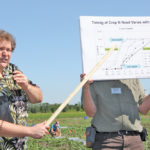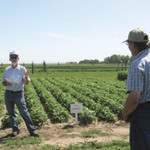
Tag Archives Agricultural soil science

More emphasis should be placed on soil health, MCDA speaker says
Cover crops, reduced tillage, crop and livestock diversity can all help reduce watershed challenges

Cover cropping improves land and bank balance
Ontario farmer Blake Vince has harnessed the power of cover crops on his operation

What does your underwear say about your soils?
The underwear test can be a visual indicator of the activity that is taking place in your soil

African smallholders are adopting conservation agriculture techniques
When you’re subsisting on three-quarters of an acre, increasing maize production from 32 kg a year to 990 kg is a life-changing event

Soil test right after the combine
The tradition has been to sample for soil nutrients later in the fall, but there are compelling reasons to go sooner than later
Editorial: Peace and prosperity

Agricultural Hall of Fame: Gordon McPhee
Four Manitobans were inducted into the Manitoba Agricultural Hall of Fame at a ceremony in Portage la Prairie July 14. Over the next few weeks, we’re featuring each one with their citations

There’s an economic case for strip till
The technique can save time and organic matter when it comes to soybean production

Take a 4R nutrient management farm demonstration tour
Learn more about using the right source of fertilizer and applying it at the right time, at the right rate and in the right place

Pulses plus conservation practices equal healthy soils
Combining pulse crops and soil-friendly farming practices looks like a real winner


